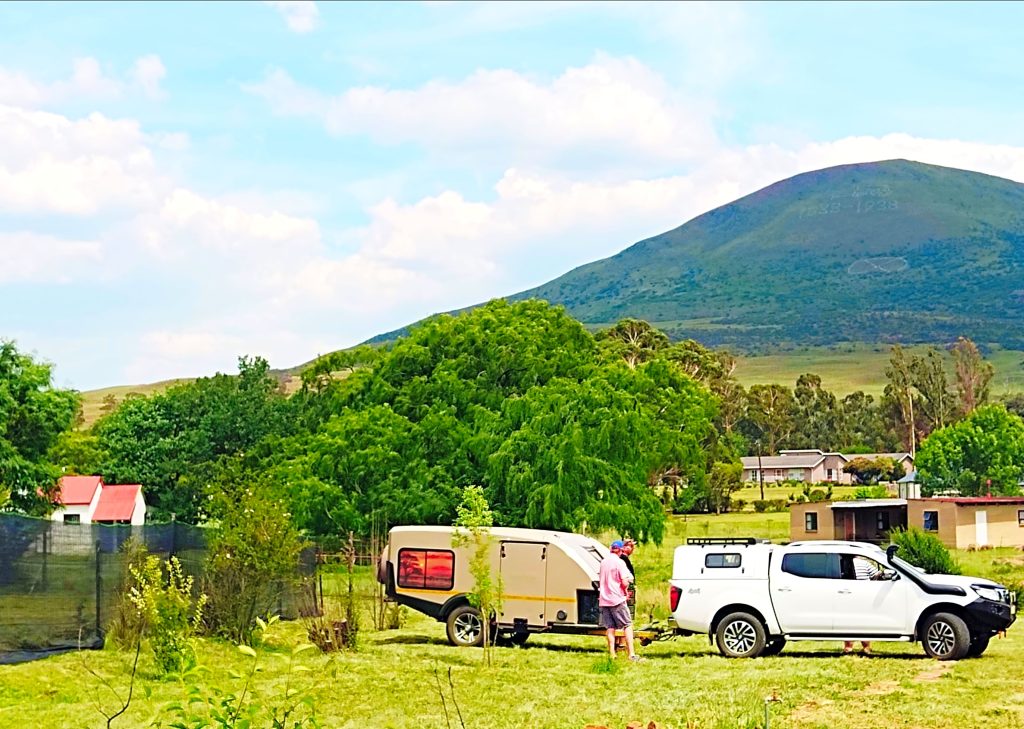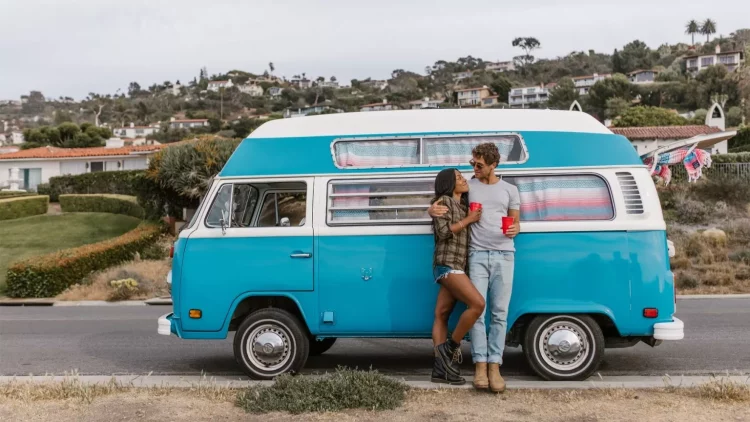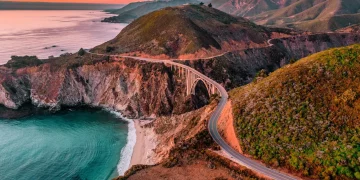Freedom on Four Wheels Along the Southern Coast
There’s something magical about the stretch of coastline between Mossel Bay and Storms River—a winding path of cliffs, vineyards, lagoons, and old-growth forest. This is South Africa’s Garden Route, long revered by road-trippers and nature lovers alike. But in 2025, a new kind of traveler is taking over its scenic bends: the campervan nomad.
Post-pandemic travel priorities have shifted. Budget-conscious explorers now value self-contained mobility, open-air accommodations, and journeys that offer both spontaneity and control. Enter the week-long Garden Route campervan adventure—a rising trend that combines the spirit of freedom with the richness of South Africa’s diverse landscapes. The question is, can you really do it all in just seven days?
The short answer is yes. But it’s not just about ticking off sights. It’s about soaking in coastal breezes while making breakfast by your van, watching elephants at Addo without worrying about check-out times, and sipping Stellenbosch wine under stars. This route isn’t a race. It’s a rhythm.
Why the Garden Route Is Made for Campervans
The Garden Route is one of the few road trips in the world that offers a complete mix of ecosystems, cultures, and activities in under 800 kilometers. In a single day, you can wake up in a beach cove, kayak across a lagoon, hike a forest trail, and watch whales breach from a cliff.
What makes it perfect for campervans? Infrastructure. South Africa has seen a surge in privately owned caravan parks, municipal camping sites, and eco-friendly glamping stops along the N2 highway. Power hook-ups, showers, and laundry facilities are widely available—and most importantly, many campsites now offer remote booking, making it easier than ever to plan on the go.
Rental options have exploded as well. Whether you’re a solo backpacker opting for a budget sleepervan or a couple splurging on a fully equipped rooftop tent rig, the market has adapted. And unlike more rugged overlanding routes in Namibia or Botswana, the Garden Route is paved, safe, and sprinkled with charming small towns that cater to travelers.
The Ideal 7-Day Itinerary (With Flex Built In)
Day 1: Cape Town to Mossel Bay
Start early from Cape Town, pick up your camper, and drive east along the N2. It’s about a five-hour stretch to Mossel Bay, a historic harbor town known for its beaches and seafood. Overnight at the Point Caravan Park, perched beside the ocean. Hike the Cape St. Blaize trail for coastal views, and enjoy your first sunset with local mussels and a cold Windhoek lager.
Day 2: Wilderness and Knysna
Wilderness is aptly named. Stop here to hike through the Wilderness National Park, rent a kayak, or take a dip in the Touw River. Drive on to Knysna for the afternoon—explore the Knysna Heads or sample oysters in town. Camp at Lake Brenton or Buffelsbaai and fall asleep to the sound of waves.
Day 3: Plettenberg Bay and Robberg Nature Reserve
Plettenberg Bay has one of the most dramatic coastlines on the route. Robberg Nature Reserve’s circular trail gives you everything: ocean cliffs, seals on rocks, and golden beaches. If you want to surf or paraglide, Plett is the place. Stay at Arch Rock Seaside Camp or quiet caravan parks tucked inland.
Day 4: Tsitsikamma and Storms River
The Tsitsikamma section of Garden Route National Park is the wild heart of this drive. Stop at the Storms River Mouth for suspension bridge walks and sea kayaking. Camp inside the park if you can—there’s nothing like hearing the forest come alive at night. Or try Wild Spirit Lodge for a more communal, bohemian vibe.

Day 5: Addo Elephant National Park
This day requires an early start and a bit of a detour, but it’s worth it. Addo is one of South Africa’s top safari parks, and the southern section is camper-friendly. Self-drive through elephant herds and possibly spot lions or black rhinos. Addo Rest Camp has camping areas inside the reserve with basic facilities and night drive options.
Day 6: Jeffreys Bay or Wine Country Detour
Choose your adventure: surfers can head to Jeffreys Bay for legendary right-hand breaks. Or wine lovers can loop inland toward Oudtshoorn and the Klein Karoo wine route, sampling port-style reds and ostrich steaks. There are vineyard campgrounds and boutique stops in Calitzdorp and Montagu, ideal for slowing the pace.
Day 7: Return via Swellendam or Langeberg
On your final day, ease back toward Cape Town, stopping in Swellendam for art galleries, local cheese, and quiet hiking trails. Camp at Bontebok National Park if time allows, or head straight to Cape Town via Hermanus for possible whale sightings.
This one-week plan covers coast, forest, wildlife, wine, and wilderness—with enough flexibility to follow your mood. That’s the magic of vanlife.
Budget Breakdown: Campervan vs. Traditional Travel
Why are more travelers choosing campervans? Beyond the Instagram aesthetic, it often comes down to cost. A mid-range camper rental for two people averages $80–120 USD per day in 2025, depending on season and vehicle type. Campsite fees range from $10–25 per night. That means your accommodation and transport are bundled into one, with the added bonus of cooking your own meals.
Compare that to nightly guesthouse stays ($40–100), rental cars ($30–60/day), and eating out—and campervanning starts to look very appealing, especially for couples or friend groups splitting costs.
Plus, you avoid peak-season price gouging and get to wake up where the view is best.
Tips for First-Time Campervan Travelers in South Africa
- Drive on the Left: South Africans drive on the left side of the road. If you’re from the US or Europe, practice in low-traffic areas first. Most campervans are manual unless specified.
- Book Key Campsites Ahead: While spontaneity is part of the appeal, parks like Tsitsikamma and Addo do get full. Use apps like CampSouth or LekkeSlaap to secure spots.
- Bring Your Own SIM Card: WiFi is patchy, but mobile data coverage is strong along most of the route. A local SIM will help with navigation and reservations.
- Pack for All Seasons: Even in summer, mornings and evenings can be cold. Coastal weather shifts fast. Bring layers, rain jackets, and sturdy hiking shoes.
- Respect the Load Shedding: South Africa still experiences planned electricity outages. Campervans are self-sufficient, but it’s wise to charge devices when you can.
- Shop Locally: Support small farm stalls and fish markets. Not only is the food fresher and cheaper—it’s a way to connect with the communities you’re passing through.
Why One Week Might Just Be the Beginning
Many travelers start the Garden Route planning a one-week loop—and end up staying longer. Some fall in love with a wild beach and linger. Others make friends at a community farm and change course. The vanlife culture here isn’t just about the van—it’s about slowing down, saying yes more often, and living in motion.
The route’s diversity makes every day feel like a new story. Wake up beside elephants, have breakfast under ancient milkwood trees, swim in turquoise tide pools, and sip wine in a valley that feels like Tuscany with a wilder twist.
This isn’t a destination—it’s a series of moments strung together by winding roads and ocean mist.
So, Can You Really Do It in One Week?
Yes. A well-paced week is enough to experience the Garden Route’s highlights, breathe deeply, and return feeling like you’ve lived a different kind of life. But don’t be surprised if you find yourself longing for more time, more space, more silence.
In an era of curated travel and digital noise, campervanning the Garden Route offers something elemental: freedom. It’s not just about what you see. It’s about how you feel as you roll down the windows, turn up the music, and realize you’ve chosen a road where the journey truly matters.





















